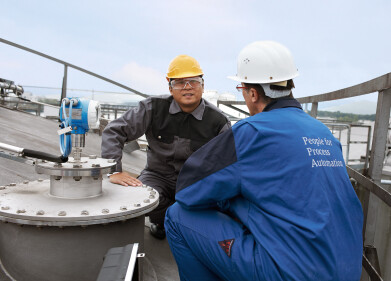Analytical Instrumentation
Which Trace Metals Are Found in Oil?
Apr 02 2021
Whether it is being used as a fuel source, a lubricant or for another purpose, the purity of oil is important to ensure its quality and to avoid damaging impacts upon the machinery it interacts with. For that reason, testing oil samples to quantify the concentrations of trace metals present in them is a necessary task for both producers and buyers.
Calcium and magnesium are among the most common trace metals found in oil, but generally have little effect upon the performance of the oil in regular concentrations. However, certain heavy metals, such as iron, nickel and vanadium, can have deleterious impacts upon refinery processes, which is why careful testing of them must be conducted to ensure that an oil is fit for purpose.
What effect can trace metals have?
Nickel and iron can have a detrimental impact upon the catalysts used in hydrotreaters and fluid catalytic cracking (FCC) units, which can contribute to the unwanted creation of coke and incur unplanned expenses for the refiners. Vanadium can have a similarly undesirable impact, which is why all three of these heavy metals should be screened prior to application of the oil.
Meanwhile, continual assessment of metal levels in engine oil can also be used as an indicator of the machinery’s health. While sudden spikes in metal content can point to the imminent malfunction or failure of an engine component, it’s more beneficial to continually monitor the levels of metal as a means of anticipating when a piece of machinery requires maintenance, thereby avoiding costly repair or replacement costs. More information on this subject is contained in the article Analysis of In-Service Oils Following ASTM D5185 with ICP-OES/AES for interested parties.
How can trace metals be assessed in oils?
As is elucidated in the above article, ICP-OES is the most popular method of assessing metal content in oils, thanks to its speed, efficiency and accuracy, as well as its matrix tolerance. This makes it an ideal choice for complying with national and international standards. But while ICP-OES is a highly accurate and precise technique, it requires considerable preparation before the fact, which is complicated and time-consuming.
For that reason, professionals in the petroleum industry have been investigating alternative avenues of screening oil samples which dispense with the expensive and cumbersome preparatory stage. Petra MAX, which relies on HDXRF, is one such technique which has shown promising results. For greater elaboration on how the method compares to traditional strategies, the article Precision Comparison Case Study — Petra MAX (HDXRF®) vs ICP (IP 501 & IP 621) offers a compelling argument in favour of the former.
Digital Edition
PIN 25.1 Feb/March
March 2024
In This Edition Safety - The technology behind the ION Science Tiger XT - Safety with ammonia and LOHCs as hydrogen carriers Analytical Instrumentation - Discussion on new tribology te...
View all digital editions
Events
Apr 22 2024 Hannover, Germany
Apr 22 2024 Marrakech, Morroco
Apr 22 2024 Muscat, Oman
Apr 22 2024 Rotterdam, Netherlands
Apr 23 2024 Singapore


















